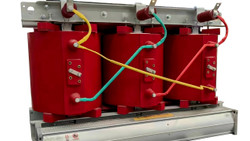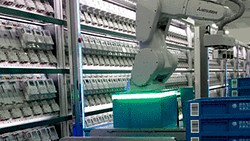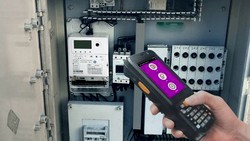Halloween Special – October 2025
The Spectres in the Grid
The energy sector has always had its share of ghosts—unexplained outages, phantom loads, and the occasional eerie hum from a transformer in the dead of night. But lately, a new spectre has emerged, one that flickers in and out of existence, disrupting the once-predictable world of power generation.
We're talking about renewables—wind and solar, the "phantom" sources that appear and disappear with the whims of weather, leaving grid operators scrambling like paranormal investigators trying to contain a poltergeist.
Traditional power plants—coal, gas, and nuclear—were built for a world where electricity flowed in a steady, controllable stream. Now, they're being haunted by the unpredictable nature of renewables. Some call it progress. Others call it a curse.
This Halloween, we're shining a torch on how renewables are the energy world's phantom menace—and what utilities can do to exorcize the grid before the lights go out for good.
The Poltergeist of Intermittency: Here One Minute, Gone the Next
If renewables were a horror movie villain, intermittency would be their signature move—the way they vanish without warning, leaving grid operators in the dark (sometimes literally).
Solar's midnight disappearance is a classic: the sun sets, and suddenly, gigawatts of capacity evaporate. California's infamous "duck curve" is a perfect example—solar floods the grid by day, then drops off a cliff at dusk, forcing gas plants to scramble to fill the gap.
Wind's ghostly gusts are just as unpredictable. Wind farms can go from full output to near-zero in minutes if the wind dies down. In Texas, sudden drops in wind have led to near-blackout conditions, requiring emergency interventions.
Unlike coal or nuclear, which can run 24/7, renewables don't answer to dispatchers. They come and go as they please, like a mischievous spirit toying with the living.
The Exorcism? Energy storage (batteries, pumped hydro) and better forecasting can help tame the ghosts—but for now, intermittency remains the boogeyman of grid stability.
The Revenge of the Baseload Zombies: Why Old Power Plants Refuse to Die
Just when you thought coal and nuclear were dead, they rise from the grave—not because we want them, but because we need them.
The nuclear undead are a real phenomenon. Plants like Diablo Canyon (California) and Palisades (Michigan) were slated for retirement, only to be resurrected because renewables couldn't fill the gap fast enough.
Coal's last gasps are just as persistent. Despite pledges to phase it out, coal plants keep getting lifeline extensions because they provide reliable, always-on power—something renewables struggle with.
Natural gas was supposed to be a temporary fix while renewables scaled up. Instead, it's become a permanent crutch, with new plants still being built to back up wind and solar.
Why won't they stay dead? Because renewables, for all their growth, still can't guarantee power when the sun isn't shining or the wind isn't blowing. Until storage and grid flexibility improve, baseload zombies will keep shuffling along.
The Exorcism: Can We Banish the Phantoms?
If renewables are the ghosts haunting the grid, then energy storage, grid upgrades, and smart technology are the proton packs we need to contain them.
Batteries: The Ghostbusters of the Grid
Lithium-ion batteries (like our Aqua series) can store excess solar/wind and release it when the phantoms vanish. Pumped hydro (the OG of storage) is making a comeback, with projects like Australia's Snowy 2.0 acting as giant energy vaults. The catch? Storage is expensive, and we don't have nearly enough yet. The U.S. would need hundreds of gigawatts of storage to fully back up renewables—we have less than 10% of that today.
Grid Flexibility: Making the System Less Hauntable
Demand response (paying customers to cut usage during peaks) helps smooth out the bumps when renewables dip. Microgrids (localized, self-sufficient power networks) can isolate and protect critical loads when the main grid gets spooked. AI & predictive analytics are like ghost-hunting tools, helping operators anticipate when renewables will fade.
The Ultimate Solution? A Hybrid Grid
The future isn't renewables vs. traditional power—it's a hybrid system where baseload plants (nuclear, gas with carbon capture) provide steady power; renewables supply clean, cheap energy when available; and storage and flexibility act as the exorcists, keeping the grid stable.
Until then, the phantoms will keep lurking.
The Scariest Story of All: What If We Fail?
If we don't tame the renewable phantoms, we could face:
- More blackouts—like Texas in 2021, when wind froze and gas plants failed, leaving millions in the dark.
- Skyrocketing costs—overbuilding renewables + storage could make electricity unaffordable for many.
- A backlash against clean energy—if reliability suffers, public support for renewables could collapse.
The good news? We're not doomed—yet. Countries like Denmark (50%+ wind power) and Germany (renewable-heavy grid) have shown it's possible to live with the ghosts—but it takes smart policy, massive investment, and a little bit of luck.
Conclusion: Living with the Phantoms
Renewables aren't going away—they're the future of energy. But like any good horror story, the real terror isn't the ghosts themselves—it's what happens when we ignore them.
The phantom menace of intermittency, the zombie baseload plants that refuse to die, and the race to build enough storage are all challenges we can overcome—if we treat them like the serious (but solvable) problems they are.
This Halloween, the scariest thing in the energy world isn't a haunted substation or a mysterious blackout. It's the thought that we might not move fast enough to exorcize the grid before the lights flicker out for good.
So grab your proton pack (or in this case, your battery storage) and get to work. The phantoms are here to stay—but with the right tools, we can keep them from haunting us forever.
Takeaway
The integration of renewables brings both promise and peril. Intermittency, ageing baseload plants, and the urgent need for storage and flexibility are the real "ghosts" of the grid. With smart investment and clear-eyed planning, utilities can keep the lights on—and the phantoms at bay.
How CLOU Energy Storage Can Help Tame the Grid's Phantoms
At CLOU, we know that reliable energy storage is the key to a stable, future-ready grid. Our advanced battery storage solutions are designed to capture excess renewable energy when it's abundant and release it when the grid needs it most—turning those "phantom" fluctuations into manageable, predictable power. Whether you're looking to support renewables, strengthen grid resilience, or optimize your operations, CLOU's scalable storage systems offer the flexibility and reliability today's utilities demand.
Don't let intermittency haunt your operations. Discover how Contact Us CLOU energy storage can help you keep the lights on—no matter what the weather (or the grid's ghosts) throw your way.
Contact Us CLOU energy storage can help you keep the lights on—no matter what the weather (or the grid's ghosts) throw your way.








All comments are moderated before being published. Inappropriate or off-topic comments may not be approved.